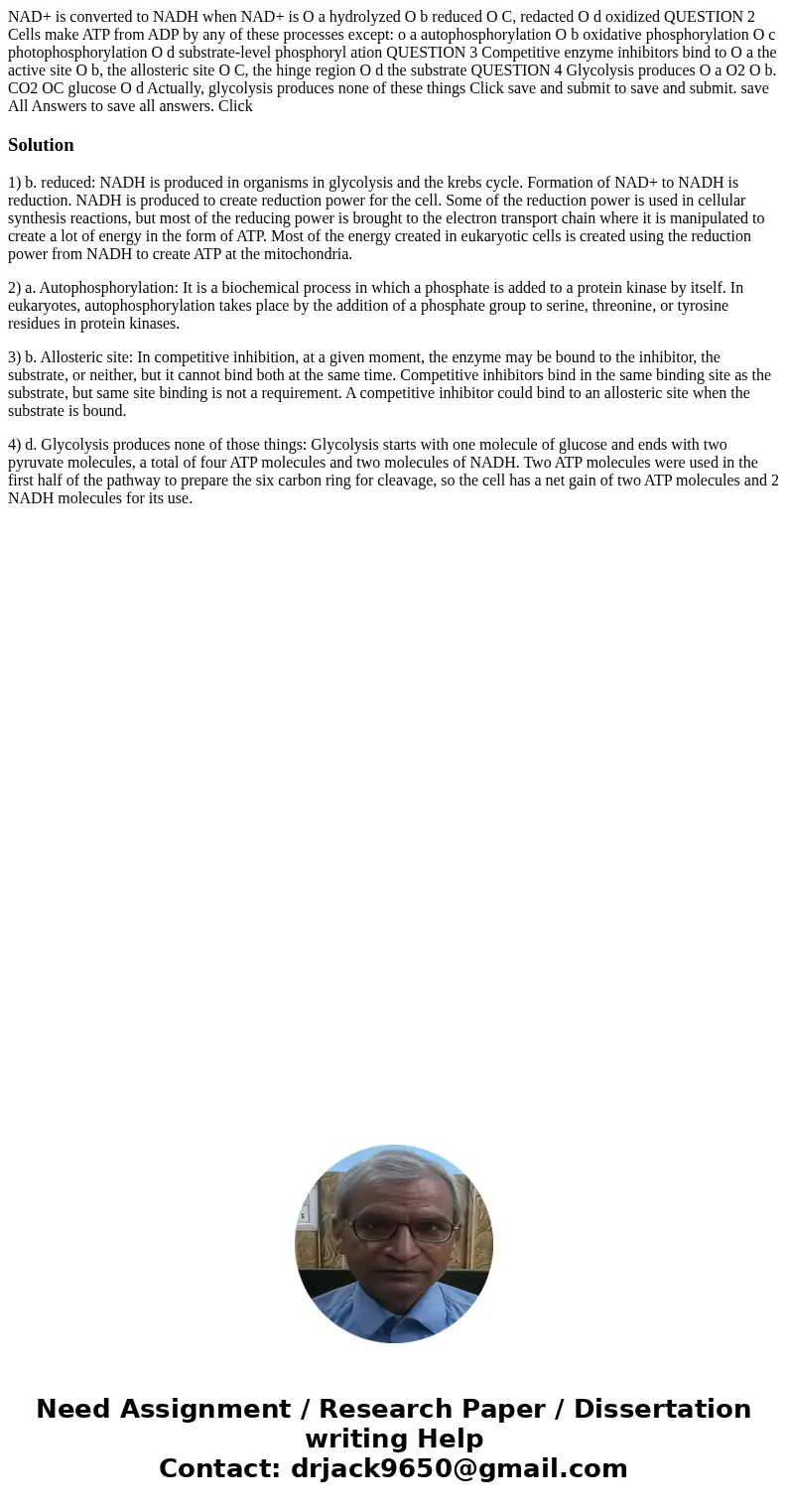NAD is converted to NADH when NAD is O a hydrolyzed O b redu
Solution
1) b. reduced: NADH is produced in organisms in glycolysis and the krebs cycle. Formation of NAD+ to NADH is reduction. NADH is produced to create reduction power for the cell. Some of the reduction power is used in cellular synthesis reactions, but most of the reducing power is brought to the electron transport chain where it is manipulated to create a lot of energy in the form of ATP. Most of the energy created in eukaryotic cells is created using the reduction power from NADH to create ATP at the mitochondria.
2) a. Autophosphorylation: It is a biochemical process in which a phosphate is added to a protein kinase by itself. In eukaryotes, autophosphorylation takes place by the addition of a phosphate group to serine, threonine, or tyrosine residues in protein kinases.
3) b. Allosteric site: In competitive inhibition, at a given moment, the enzyme may be bound to the inhibitor, the substrate, or neither, but it cannot bind both at the same time. Competitive inhibitors bind in the same binding site as the substrate, but same site binding is not a requirement. A competitive inhibitor could bind to an allosteric site when the substrate is bound.
4) d. Glycolysis produces none of those things: Glycolysis starts with one molecule of glucose and ends with two pyruvate molecules, a total of four ATP molecules and two molecules of NADH. Two ATP molecules were used in the first half of the pathway to prepare the six carbon ring for cleavage, so the cell has a net gain of two ATP molecules and 2 NADH molecules for its use.

 Homework Sourse
Homework Sourse